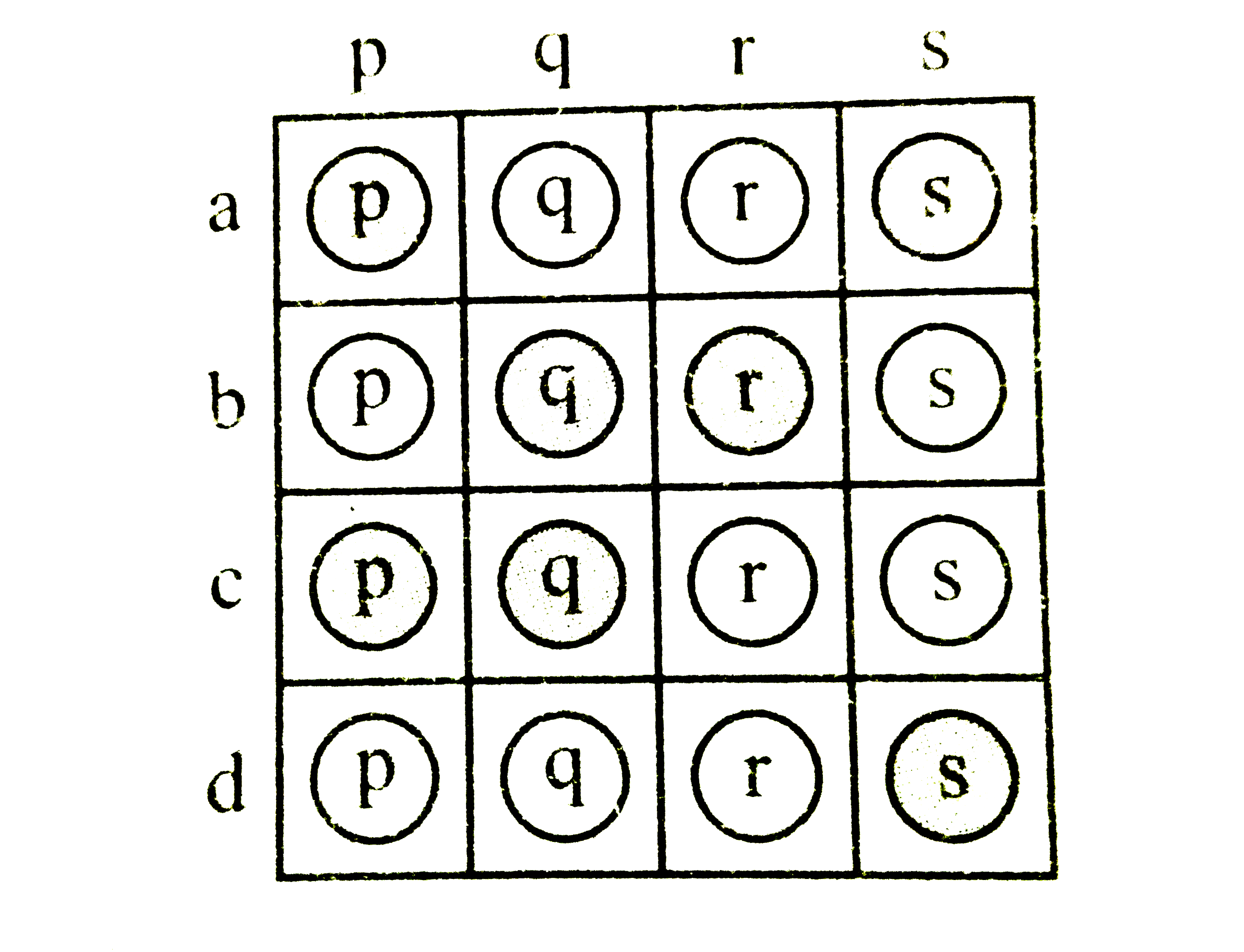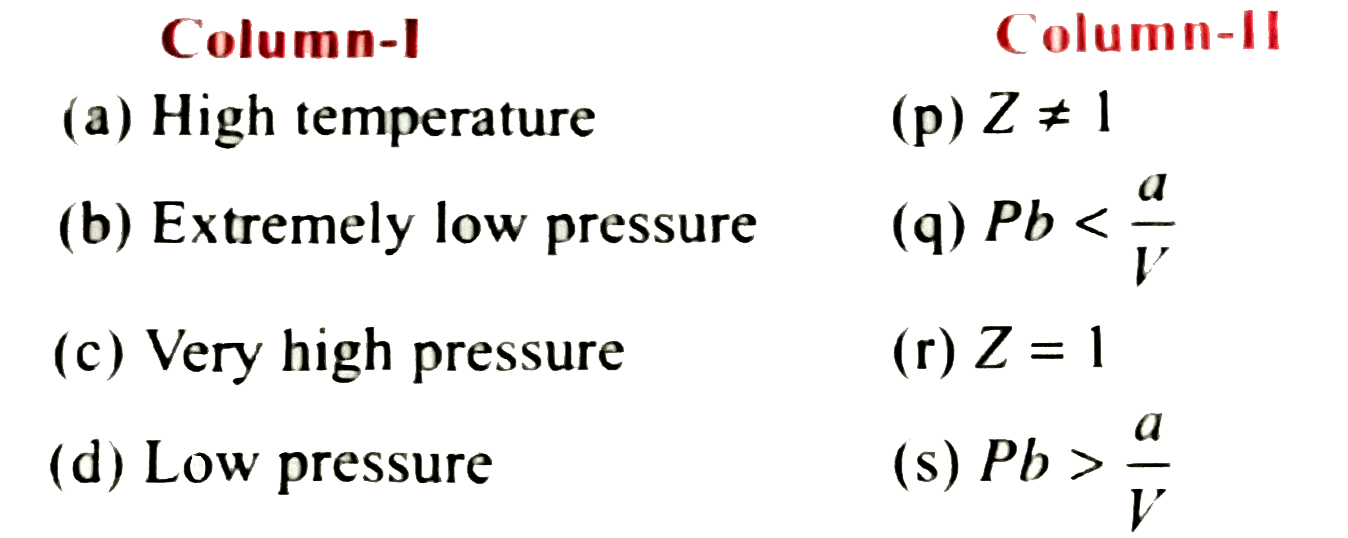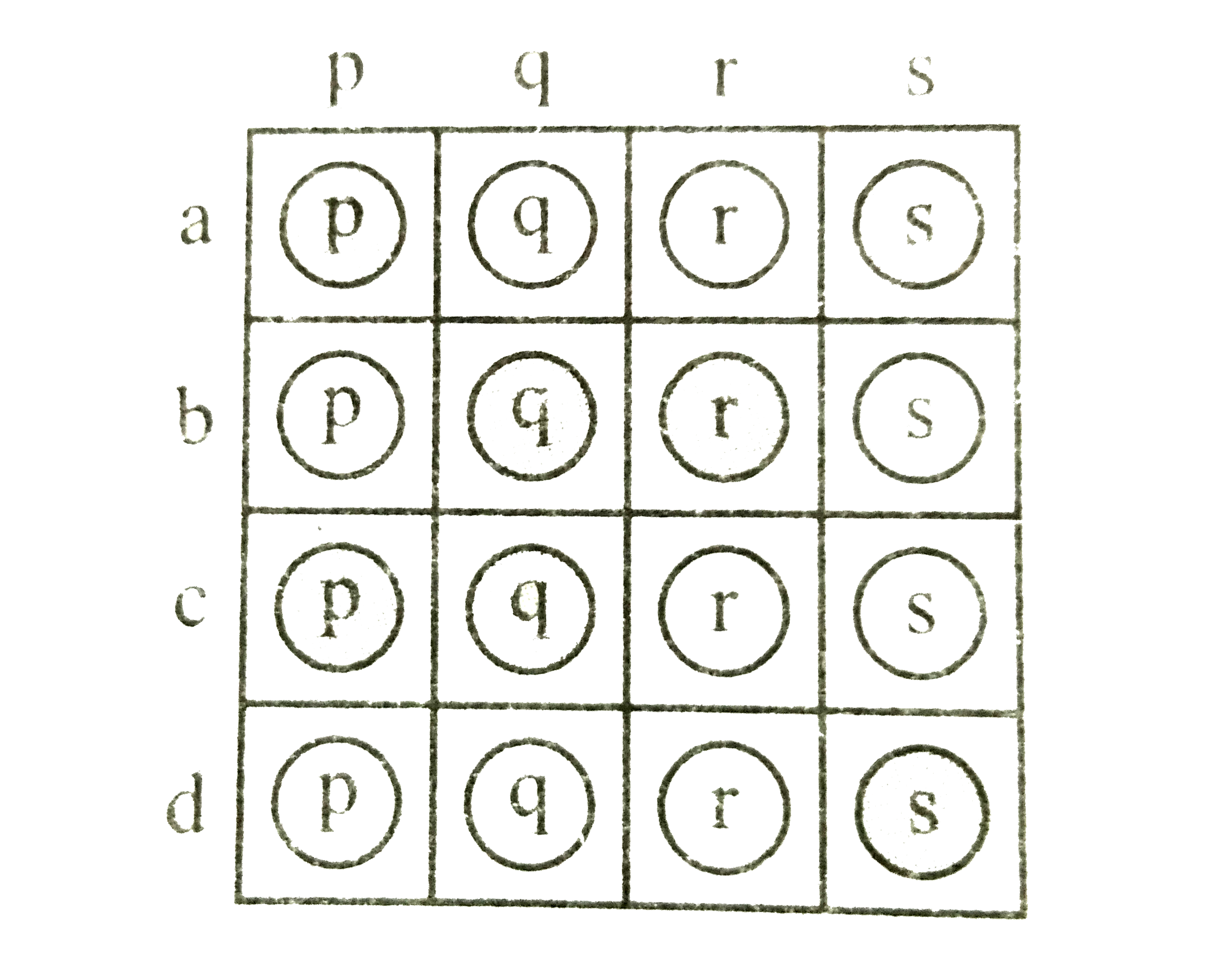Complete Solutions to Self Assess,ent of chapter STATES OF MATTER (GASES AND LIQUIDS) of Class 11 book with complete answers and questions
| Class 11 | CHEMISTRY |
| Chapter | STATES OF MATTER (GASES AND LIQUIDS) |
| OP TANDON | Self Assess,ent |
| Number Of Questions | 28 |
| Academic Year | 2023-24 |
Boyle's temperature of four gases are given below:
`{:("Gases"," "A,B,C,D,),(T_(B),120K,25K,500K,410K,):}`
Which gas can be liquefied most easily ?
View SolutionA gas is enclosed in a vessel of volume V at temperature `T_(1)` and P, the vessel is connected to another vessel of volume `V//2` by a tube and a stopcock. The second vessel is initially evacuated. If the stopcock is opened, the temperature of second vessel becomes `T_(2)`. The first vessel is maintained at a temperature `T_(1)`. What is the final pressure `P_(1)` in the apparatus ?
View SolutionIf the ratio of the rates of diffusion of two gases A and B is 4:1 the ratio of their density is
View SolutionDensity of a gas STP is `2 g//L` while the expected density is `1.8g //L` assuming its ideal behaviour. Then:
View SolutionAn ideal gas:
View SolutionIf the graph is plotted for 1 mole gas in such a way that `PV` is plotted against 'P', then intercept of the graph for real gas will be:
View SolutionThe ratio of Boyle's temperature and critical temperature for a gas is:
View SolutionKinetic energy and pressure of a gas of unit mole are related as :
View SolutionAt constant temperature of `273 K, (1)/(V)` vs P are plotted for two ideal gases A and B as given below. Ratio of number of moles of A and B are:
View SolutionAt low pressure, the graph of `PV vs (1)/(V)` for a given amount at a constant temperature for a real gas is:
View SolutionWhich of the following measure the deviation from ideal behaviour of gas?
View SolutionWhich of the following mixtures of gases at room temperature follow Dalton's law of partial pressures ?
View SolutionA real gas can be liquefied:
View SolutionIn the equation `PV = nRT`, the value of 'R' will not depend on:
View SolutionWhich of the following processes would lead to an increase in the average speed of the molecules of an ideal gas system?
View SolutionStatement-I : The pressure inside the LPG cylinder remains constant even when it is in use at room temperature
Because
Statement -2 : Vpour pressure of any liquid is independent of its amount, it depends only on temperature
View SolutionStatement-I : If a gas has compressilbility factor (Z) greater than unity, then repulsive forces are dominant.
Because
Statement -2 : Value of Z decrease with increases in pressure.
View SolutionStatement-I : The value of Boyle's temperature for a real gas is `(T_(B) = (a)/(Rb))`
Because
Statement -2 : At Boyle's temperature, `T_(B)`, real gases behave ideally over a long range of pressure
View SolutionStatement-I : A gas effuses our from a flask through an orifice (pinhole), rate of effusion decreases linearly with time
Because
Statement -2 : Pressure of the gas in the flask decreases with passage of time
View SolutionStatement-I : van der Waals' constant 'a' depends on the intermolecular forces.
Because
Statement -2 : van der Waals' constant 'b' depends on the radius of gas molecule
View SolutionThis section contains 2 questions. Each question contains statement given in two columns which have to be matched. Statements (a, b, c and d) in Column-I have to be matched with statement (p, q, r and s) in Column-II. The answers to these questions have to be appropriately bubbled as illustrated in the following examples:
If the correct matches are (a-p, s), (c-p, q) and (d-s), then correct bubbled `4 xx 4` matrix should be as follows:

Match the Column-I with Column -II

View SolutionThis section contains 2 questions. Each question contains statement given in two columns which have to be matched. Statements (a, b, c and d) in Column-I have to be matched with statement (p, q, r and s) in Column-II. The answers to these questions have to be appropriately bubbled as illustrated in the following examples:
If the correct matches are (a-p, s), (c-p, q) and (d-s), then correct bubbled `4 xx 4` matrix should be as follows:

Match the Column -I with Column -II

View SolutionCompressibility factor for ideal gas will be equal to ...
View Solution400 mL of ammonia gas at a pressure of 300 mm and 200 mL of hydrogen chloride gas at a pressure of 600 mm are mixed in a one litre evacuated flask. The pressure at normal temperature is....
View SolutionA mixture of 2 g hydrogen and 64 g oxygen exerts a pressure of 3 atm. Partial pressure of oxygen will be.....
View SolutionAir enters in the lungs in a tiny cavity called alveoli. Oxygen diffuses into our blood from alveoli. The average radius of alveoli is 0.005 cm and air inside it contains 21% `O_(2)` and 79% `N_(2)`. Assuming that the pressure in the aveoli is 1 atm at body temperature of `37^(@)C`.
Volume of single alveoli is :
View SolutionAir enters in the lungs in a tiny cavity called alveoli. Oxygen diffuses into our blood from alveoli. The average radius of alveoli is 0.005 cm and air inside it contains 21% `O_(2)` and 79% `N_(2)`. Assuming that the pressure in the aveoli is 1 atm at body temperature of `37^(@)C`.
Number of `O_(2)` molecules in one alveoli is :
View SolutionAir enters in the lungs in a tiny cavity called alveoli. Oxygen diffuses into our blood from alveoli. The average radius of alveoli is 0.005 cm and air inside it contains 21% `O_(2)` and 79% `N_(2)`. Assuming that the pressure in the aveoli is 1 atm at body temperature of `37^(@)C`.
Number of `N_(2)` molecules in one alveoli is :
View Solution
Self Assess,ent questions and complete solutions for chapter STATES OF MATTER (GASES AND LIQUIDS) of G.R. BATHLA & SONS CHEMISTRY (HINGLISH) of Class 11